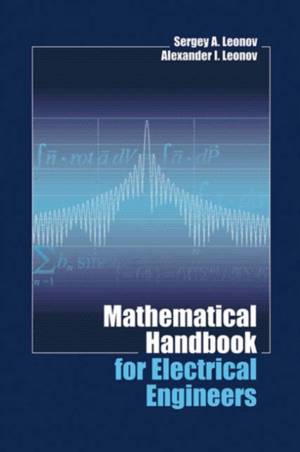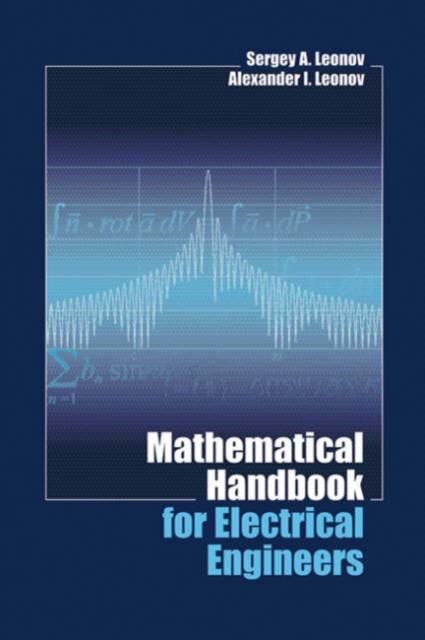
- Afhalen na 1 uur in een winkel met voorraad
- Gratis thuislevering in België vanaf € 30
- Ruim aanbod met 7 miljoen producten
- Afhalen na 1 uur in een winkel met voorraad
- Gratis thuislevering in België vanaf € 30
- Ruim aanbod met 7 miljoen producten
Zoeken
€ 245,45
+ 490 punten
Omschrijving
When trying to solve a complex, seemingly unsolvable problem, electrical engineers sometimes just need to start at the very beginning of the problem. To arrive at a solution, they have to go back to the basics and examine the mathematical rules, laws, and formulas that are at the root of every electrical engineering problem. This is why engineers need the Mathematical Handbook for Electrical Engineers. Written by electrical engineers, specifically for electrical engineers, this valuable resource presents the most common mathematical techniques used for problem solving and computer-aided analysis. It concisely, clearly, and easily explains the essential mathematics engineers use everyday on the job, and also serves as a time-saving reference for students. Examples are taken from a wide variety of electrical engineering disciplines, including circuits, devices and systems, antennas and propagation, waveforms and signal processing, and stochastic radio engineering.
Specificaties
Betrokkenen
- Auteur(s):
- Uitgeverij:
Inhoud
- Aantal bladzijden:
- 520
- Taal:
- Engels
- Reeks:
Eigenschappen
- Productcode (EAN):
- 9781580537797
- Verschijningsdatum:
- 31/05/2005
- Uitvoering:
- Hardcover
- Formaat:
- Genaaid
- Afmetingen:
- 167 mm x 237 mm
- Gewicht:
- 798 g

Alleen bij Standaard Boekhandel
+ 490 punten op je klantenkaart van Standaard Boekhandel
Beoordelingen
We publiceren alleen reviews die voldoen aan de voorwaarden voor reviews. Bekijk onze voorwaarden voor reviews.











